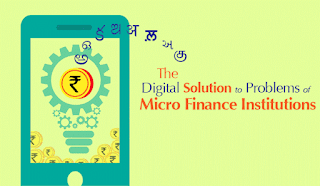Has your NGO faced the challenge of connecting with stakeholders? If your NGO is working in a domain where your stakeholders have all easy access to laptops or desktop computers, then probably you must have figured out that the easiest way to stay connected is through your websites.
However, chances are that the profile of your majority stakeholders is such that they belong to low-income groups, illiterate people, living in remote areas, lacking 24x7 electricity support, poor data connection / network, and to expect your stakeholders to be easily accessible to you is almost impossible. First, they may not have easy access to laptops or desktop computers to stay connected through your website. Then, they will have electricity coming on and off, and it would be difficult for them to keep even their devices in charged conditions at all times. And even if they somehow manage to do that, then the data network would be so bad that accessing internet could become a task in itself.
A mobile app can be a great switchover for NGOs in changing times. We have seen that the success of mobile platforms has brought about a revolution in various industries. Today mobile phone has become the most popular device for accessing Internet. With India emerging as the country having the highest number of Internet users, it is the right time for NGOs in India to invest in mobile apps, rather than invest on having a website.
NGOs have been engaging with their stakeholders
through their websites for donations and volunteerism, but a mobile app can
quickly emerge as an entirely new way to connect with constituencies. Mobile
apps are all about approaching and engaging with members in an altogether new technological
setup, and offering them a totally different experience for receiving
information as compared to websites.
A mobile app is technologically far superior to a
website for any interaction between companies or institutions on the one hand
and the end user on the other. A customized application downloaded to the smart
phones or tablets is easy to use and can facilitate not only easy communication
but also direct and open communication with users, because mobile phones are
carried by the users all the time, wherever they are and whatever they are doing.
There can always be push messages delivered to target groups and also ensure
its immediate delivery.
So, if your NGO is working on farmer’s literacy or
women’s health, it is far easier for you to reach out to your stakeholders and pass
on important information to them through mobile apps. This is not just easy to
operate and download, but this medium can be easily used to collect or pass on
desired information through this channel on almost real time basis. This is
much easier and cost-effective compared to making physical contact every time.
NGOs get a substantial part of their funds through
sponsorship and raising fund is always the most tedious tasks for them. They often
times hire professionals who are assigned the responsibility to approach
potential donors to be able to carry out their activities. Mobile apps increase
their base of potential donors multiple times and this can ease their
fundraising task. While personally approaching the big donors may still be
required, the facility to donate with just a click on their mobile phone can
motivate a number of people who were earlier not connected with the NGO at all.
Because the majority of stakeholders are from rural
and low-income groups not having access to English language, the mobile apps
can only be effective if they are presented to end users in their vernacular
language. Anant Computing Platform facilitates vernacular app development tools
with robust vernacular keyboards so that there is no barrier to communicating
with people in different linguistic regions.
If your NGO is working in different domains, you can
segregate your apps and then put them in a common AppWallet for easy access.
The apps developed on Anant platform are designed to be light without consuming
lots of memory space and they run on every OS, so that your NGO doesn’t have to
worry about the compatibility issues with different kinds of mobile phones,
both high end and low end and different operating systems.








